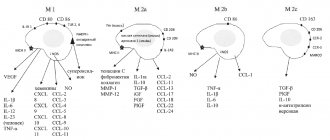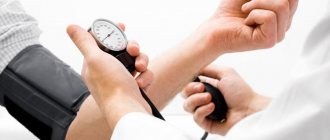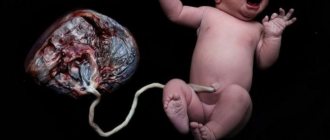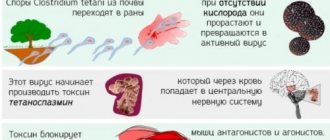home
/
Articles
/
Consequences of air in the vein
Doctors became interested in the possibility of blood transfusion only in the middle of the seventeenth century, but various types of injections, including into a vein, were carried out back in the time of Hippocrates, which was described in detail in his numerous works on medical topics. Despite the primitive level of medicine at that time (by modern standards), even then the aesculapians knew that air in a vein can cause threatening consequences for health, and sometimes death, but until humanity has come up with more effective means of administering medications and biological fluids than the injections and drips that have become familiar to everyone.
This state of affairs is due to the availability of droppers and syringes, their effectiveness, ease of use and relative safety. It is not absolute, not because of the author’s typo, but due to a number of objective factors. One of the most significant is the possibility of air entering the bloodstream during the injection process. No mammal can live without oxygen, but its presence in the veins and inside the human blood system can cause very serious complications, including irreparable ones. This article will discuss the nature of destructive processes caused by air entering a vein, their consequences and preventive measures designed to prevent the situation.
Gas Bubble Promotion
Patients are most concerned about medical procedures: injections and blood sampling for analysis. A small air bubble is called an embolus in medical parlance. Let us remind people who are not familiar with anatomy: through the veins, blood always tends to the right atrium. To do this, the heart and diaphragm create a suction action, the walls of the blood vessels push the fluid, preventing it from reversing.
When an embolus enters the blood (regardless of the location), it necessarily moves towards the heart. If it is small, then along the way it is absorbed by the vascular walls and disappears. Only a large bubble blocking the right atrium can cause harm.
If you introduce air not into a vein, but under the skin or into a muscle, it will be absorbed by the surrounding tissues. In medicine, there is a special method for treating endarteritis of the legs - subcutaneous injection of oxygen into “starving” tissues.
Adviсe
To avoid unpleasant consequences when administering drugs intravenously, it is best to adhere to some rules:
- Seek medical care from institutions with a good reputation.
- Avoid self-administration of medications, especially if such skills are lacking.
- Do not give injections or give IVs to people who do not have professional training.
- When forced to carry out procedures at home, carefully remove air from the dropper or syringe.
Causes of embolism
They are associated with pathological conditions and violations of the technique of intravenous manipulation. Some cases are caused by an attempt on human life.
The wall of the vessel is delimited from the surrounding tissues, so even if air appears in them, it will be impossible to let it into the vein. Another thing is conditions when a rupture of a large main vessel occurs (open fractures of the pelvis, femur, ribs). An entrance gate is formed through which air is sucked in. A severe infection - gas gangrene - contributes to the “corrosion” of the vascular wall, breaking its tightness.
Chest surgery
When performing operations on the thoracic and abdominal organs, the surgeon always takes into account the risk of damage to large vessels. Clamps are temporarily applied not only to prevent bleeding, but also to prevent air from entering large veins with serious consequences.
In hospitals, catheterization of the subclavian vein is used for long-term infusion therapy. The manipulation is carried out by anesthesiologists or surgeons. If the needle is directed incorrectly or the vessels are atypically positioned, they often end up in the artery. An experienced doctor will immediately notice the scarlet color of the blood and noticeable pulsation. If it is not possible to distinguish in time, a small bubble can enter the arterioles of the heart, lungs or brain.
When connecting an IV to a correctly installed catheter, the hole is open for a moment, and there is a danger of letting in a small volume of air. Doctors always cover the needle with a finger.
Criminal cases are difficult to prove. The expert is always alarmed by the presence of an injection mark, the absence of obvious signs of serious illness, and the suddenness of death.
Consequences of air ingress
Situations in which air ends up in a vein are called embolism in the medical literature. They happen extremely rarely, but if they do occur, the following can happen in the body:
- Blockage of a vessel. The likelihood of this result is highest in people who have atherosclerotic plaques and suffer from hypertension. In both cases, vessel patency is reduced, which increases the likelihood of blockage
- Atrial stretch. Air that has entered the circulatory system and freely reaches the myocardium is collected in the right part of the myocardium, from where it is not able to freely exit. If its amount is quite high, muscle tissue is stretched, which has an extremely negative effect on the functioning of the heart, causing arrhythmia, paroxysms and more serious dysfunctions.
- Death. Occurs when an exorbitant volume of air (from twenty cubic meters) is introduced into a vein. The likelihood of its occurrence is greatly increased in people with cardiovascular diseases
Despite the fact that the possibility of air entering the circulatory system during an intravenous injection or placement of a drip cannot be completely excluded, doctors assure that its volume cannot cause significant harm to a healthy person. Dangerous consequences are fraught only with the deliberate introduction of an impressive amount of air or its accidental penetration during surgery, injury, childbirth, or in other emergency situations.
Is it possible to have a heart attack or stroke?
The mechanism of a heart attack or stroke is a sudden blockage of the arteries supplying the heart muscle or brain.
The heart and brain have their own blood circulation. The coronary arteries arise directly from the aorta, and the cerebral arteries arise from the internal carotid and subclavian arteries.
To form a zone of infarction or cerebrovascular insufficiency, the gas must overcome the barrier between the venous and arterial parts of the blood flow. A similar mechanism appears in patients with heart defects when communication is maintained through a “window” in the septum separating the right from the left (arterial) sections.
Danger of entering a vein
In some cases, the entry of bubbles into the vessels is dangerous, as it leads to various serious complications.
If they penetrate in large quantities or even into a large vessel (artery), it can be fatal. Death usually occurs as a result of cardiac embolism. The latter is due to the fact that a plug forms in a vein or artery, which clogs it. This pathology also provokes a heart attack.
When the vesicle enters the blood vessels of the brain, it can cause a stroke and brain swelling. It is also possible to develop pulmonary thrombosis.
The prognosis is usually favorable with timely help. In this case, the air lock quickly dissolves, and negative consequences can be prevented.
In some cases, residual processes may develop. For example, when blood vessels in the brain become blocked, paresis develops.
What is the difference between gas embolism in divers?
For divers, the main role is played by nitrogen, which is constantly present in the blood. The profession involves maintaining the relationship between ambient pressure (increases significantly at depth) and the state of the dissolved gas mixture. When lowering, the amount of nitrogen in the blood increases 4 times. If the rise is slow, microbubbles are transferred to the lungs and exhaled into the machine. With accelerated ascent, the volume of nitrogen does not have time to decrease, it “boils”.
Embolism in divers
The bubbles form emboli to which platelets attach. Gas embolism causes death from severe damage to the vascular system.
During intravenous procedures
Collection for analysis from the ulnar vein is carried out after applying a tourniquet in the shoulder area. This is necessary for a short-term delay in blood flow. By pulling the syringe piston or by gravity, blood comes out of the needle, while the formation of a bubble is impossible due to the increased pressure inside the vessel. If air enters the subclavian vein during catheter installation, subcutaneous crepitus (crunching on palpation) is simultaneously observed.
When an injection is given or a system for administering a solution is installed, medical personnel are obliged to monitor the patient’s well-being, reaction to the drug, and local pain.
How to do intravenous injections correctly
Intravenous injections are prescribed in the complex treatment of diseases. The doctor writes in the referral how much is recommended for a particular patient.
Intravenous injection
Manipulation requires successive steps:
- a tourniquet is applied above the intended injection site (for the elbow area it is necessary to clamp the shoulder, for injections into the hand - the forearm);
- lightly pat the hand or massage from bottom to top until a clear picture of swollen superficial vessels appears;
- insert a needle along the direction of blood flow;
- after dark blood is released, the tourniquet is removed and the solution is slowly (some medications are very slow) injected.
You should draw the medicine into the syringe and remove the bubbles by pressing the piston before applying the tourniquet.
How to remove air from the system
When attaching a syringe to a needle, the nurse must be sure that the bubbles have been removed first. To do this, tap the body with a finger in a vertical position. The bubbles connect and rise up. Then they are squeezed out by a piston with some of the liquid.
When installing the system, the medical professional monitors the fluid level and regulates the rate of administration. The bubble is either squeezed out by lifting the cannula upward, or when shaking the tube it goes into the “control”. When the injected solution has run out and the nurse has not had time to remove the needle, the gas will not be able to get inside due to insufficient pressure. Therefore, there is no need to worry if an air bubble gets into the vein through the IV, it is impossible to die from this.
Devices for plasmapheresis and hemosorption are equipped with special filters that do not allow gaseous components to pass through. Safety is guaranteed throughout the entire procedure.
Droppers (infusion therapy)
Details
Infusion therapy (droppers, venous, subcutaneous injections)
Infusion therapy (from the Latin Infusio - infusion, injection and from the Greek Therapeia - treatment) is a treatment method based on the administration or infusion of drugs intravenously or subcutaneously.
Infusion solutions are divided into colloid and crystalloid. Crystalloid solutions include solutions of electrolytes and sugars (glucose, fructose). Electrolyte solutions can be isotonic, hypotonic and hypertonic. Electrolyte solutions include: physiological solution (sodium chloride solution for infusion 0.9%), Ringer's solution (solution of 6.5 g NaCl, 0.42 g KCl and 0.25 g CaCl2 in 1 liter of double-distilled water), Ringer-Locke (9 g NaCl, 0.2 g KCl, 0.2 g CaCl2, 0.2 g NaHCO3, and 1 g glucose per 1 liter of water). Electrolyte solutions are indicated for acute loss of extracellular fluid, which contains sodium and chlorine ions. Hypertonic solutions include glucose solutions (5%, 25%, 40%), soda solution and table salt solution (10% and 20%).
We can say that these drugs are most often prescribed to patients. However, in the medical practice of the Kotofey veterinary clinic, other drugs are regularly used, which are administered by infusion, either alone or in combination with others.
By prescribing infusion therapy, you can solve problems such as:
- replacement therapy for conditions accompanied by loss of fluid and salts: vomiting, diarrhea, high fever, increased volume of urination;
- removal of toxins from the body during intoxication caused by purulent-inflammatory processes (pyometra, abscesses, phlegmon).
Animals with diseases that lead to the accumulation of toxic products in the body (chronic renal failure, hepatitis, poisoning, etc.) are also subject to infusion therapy If for some reason an animal is not able to take food on its own, much less liquid (due to a severe general condition, after operations on the gastrointestinal tract, etc.), it is prescribed parenteral nutrition (all nutrients and vitamins are administered intravenously ). Infusion therapy is prescribed if for some reason the animal may be deprived of access to water. This is especially true for cats that get used to drinking under certain conditions (for example, from the tap, and then the tap turns out to be closed for a long time; or an adult cat could be switched from natural or wet food to dry food, and out of habit it continues to drink a small amount of water .). Many medications are administered with infusion solutions: antibiotics, hormones, vitamins, etc. There are other situations when infusion therapy is indispensable when providing medical care to patients. For example, in case of loss of a large volume of blood, drugs are infused to help fill the vessels and thereby alleviate the animal’s condition and ensure the possibility of further treatment.
Thus, 3 stages of infusion therapy can be distinguished:
- emergency stage;
- replacement stage;
- support stage;
Types of infusions.
Based on the location of administration, infusions are divided into:
- intra-arterial (a special valve is used for intra-arterial administration);
- intravenous (the solution will enter the venous bed due to its own gravity, and the rate of administration is limited by a clamp, or the flow is controlled by an infusion pump);
- subcutaneous (for faster administration of solutions, an infusion pump is used, or the solution is administered due to its own gravity).
According to the method of administration, infusions are divided into:
- Jet. Characterized by minimal dilution of the drug. With slow administration, a long time is required to achieve the optimal concentration; it is also carried out using infusion pumps.
- Drip. For drip infusions, a solution of the administered substance is used. This achieves minimal impact on the walls of arteries and veins, and adjusts the volume of infusion.
Goals and objectives of infusion therapy.
The purpose of infusion therapy is to maintain body functions (transport, metabolic, thermoregulatory, excretory, etc.)
The objectives of infusion therapy are:
- ensuring the normal volume of water spaces and sectors (rehydration, dehydration), restoration and maintenance of normal plasma volume;
- restoration and maintenance of VEO (water-electrolyte metabolism);
- restoration of normal blood properties (fluidity, coagulation, oxygenation, etc.);
- detoxification (removal of toxins);
- long and uniform administration of drugs;
- implementation of parenteral nutrition (PN);
- normalization of immunity.
Infusion therapy plays a huge role, and in some cases is indispensable in treating animals and maintaining their vital functions. Most often in the practice of doctors at the Kotofey veterinary clinic, subcutaneous or intravenous infusions are used. Correctly prescribed solutions and rates of administration quickly have a positive effect on the animal’s well-being.
It is also important that IVs do not cause significant discomfort to animals, and with the right approach to communicating with patients, as a rule, the procedure takes place calmly and without protests from the patient. In such cases, the animals tolerate subsequent visits and repeated droppers quite calmly, and the owners are grateful for the positive dynamics in treatment.










